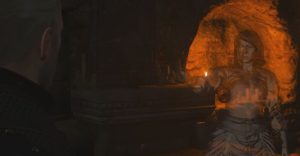Which D&D Subclasses Work Best For Multiclassing Combinations

One of the more enjoyable aspects of character-building in Dungeons & Dragons 5th edition is the ability to create “game-breaking” multiclass character builds – a combination of character-classes, magical spells, or feats that make D&D player characters ridiculously overpowered in their chosen field (combat, diplomacy, stealth, knowledge-gathering, etc.). To create an over-powered D&D PC both fun to use and not frustrating for other people at the game table, players should carefully examine the character subclasses they wish to combine, making sure their signature abilities synergize with each other and remain viable as their PC levels up.
“Power-Gaming” is frequently used as a pejorative in the tabletop roleplaying community, but it doesn’t have to be a negative behavior during a session of Dungeons & Dragons. RPGs like D&D, after all, are “fantasies of empowerment” where players get to put themselves in the shoes of characters who can perform mighty deeds, travel to wondrous new places, make choices with potentially world-changing consequences, get paid well for an honest day’s work, etc. It’s perfectly fine if a player in a D&D campaign wants to create a finely tweaked character build that’s extremely powerful at specific forms of combat, persuasion, or skill checks – as long as they don’t use their “power-gaming” as a way to bully or steal the spotlight from other players or the Dungeon Master.
The following passages in this article contain a few observations on how Dungeons & Dragons 5th Edition multiclassing works – how to identify subclasses that are multiclass friendly, how to find subclasses with complementary abilities, etc. Far more important than the number-crunching and book-keeping associated with multiclassing in D&D is the question of fun. Will this character build be fun for the player who makes it, fun for players who aren’t interested in making “optimized” characters, or fun in the context of the fantasy world the Dungeon Master created? Communication, collaboration, and openness are vital when creating a multiclass character build in D&D, particularly ones with the following subclasses.
Dungeons & Dragons Subclasses That Rely On A Single Attribute Work Well In Multiclass Builds

Skill, weapon attacks, and spells in Dungeons & Dragons are centered around six character-describing numerical attributes: Strength for melee weapon attacks and feats of physicality, Dexterity for ranged weapon attacks and acts of nimble grace, Constitution for enduring damage and sickening effects, Intelligence for acts of knowledge and scholarly magic, Wisdom for holy magic or making the right choices, and Charisma for persuasiveness and intuitive magic. When a D&D player character levels up, they get a limited number of chances to improve one of their attributes and, by extension, the weapon attack, skills, and spells associated with said attribute. Certain character classes have core abilities that rely on a single primary character attribute in Dungeons & Dragons – Dexterity for the various skills and precision attacks of Rogues, Intelligence for Wizards, etc. Because of this, D&D players (and RPG players in general) who want to maximize the potency of their characters as quickly as possible will engage in a practice called “min-maxing” where they keep less-important attributes as low as possible so key attributes can be made as high as possible.
Subclasses in Dungeons & Dragons 5th Edition were essentially designed to let player role-play “hybrid” fantasy heroes without actually having to create a multiclass character build. The “Eldritch Knight” Fighter subclass and the “Arcane Trickster” Rogue subclass, for instance, give Fighter and Rogue characters in D&D access to some of the arcane spells a Wizard can use, while the “Bladesinger” Wizard subclass gives Wizard PCs access to useful melee attack and defensive abilities. Many of these “hybrid” subclasses require investment into two attributes rather than one to be truly effective, causing multiclass character builds with two “hybrid” subclasses to be underpowered (since the player is forced to upgrade a wider range of attributes). Consequentially, the most optimal Dungeons & Dragons multiclass character builds are those where one of the subclasses relies on a single primary attribute. The “Battlemaster” Fighter Subclass, which can specialize in either Strength or Dexterity, pairs well with Strength-reliant Barbarians or nimble Rogues, while most Sorcerer subclasses in D&D pair well with Paladin subclasses thanks to their shared reliance on Charisma to empower their spells.
D&D Subclasses With Simple, “Free” Abilities Are Easier To Utilize In Multiclass Builds

Many character classes in Dungeons & Dragons 5th Edition have powerful abilities and magical arts that would break the game if they could be used carelessly and for whatever purpose. To maintain a sense of balance between these classes and keep gameplay challenging in a campaign, D&D developers like to limit the number of times per day player characters can use their most potent powers; “Battlemaster” Fighter player characters have a limited number of Superiority Dice they can roll and add to their special combat maneuvers, D&D 5th edition Wizards can only cast a set number of spells each day, and so on. When a D&D PC’s powers are exhausted, they generally can only “refresh” them by taking a “short rest” (recuperating for 1 hour) or a “long rest” (recuperating for 8 hours).
As a D&D player character levels up, the number of times they can use certain abilities before resting also increases; a “Battlemaster” subclass Fighter gains more Superiority Dice and more attacks per turn, spell-casters gain more spell slots, etc. Multiclass character builds are generally more versatile than character builds composed of a single class due to having a larger “bag of tricks,” but because they’re essentially two lower-level classes mashed together, multiclass builds in D&D exhaust their “per-rest” ability uses much more quickly.
For this reason, Dungeons & Dragons players planning out a multiclass character build should consider adding at least one character class with abilities that become available at low levels and aren’t limited by a PC’s need to rest. Fighters and Rogues, for instance, are popular multiclassing choices in D&D 5e because their signature abilities (Action Surge, Sneak Attack, etc.) become available at 1st or 2nd Level, while the simplest Fighter and Rogue subclasses, Champion and Thief, give players simple, useful, and perpetually active abilities.
About The Author

















